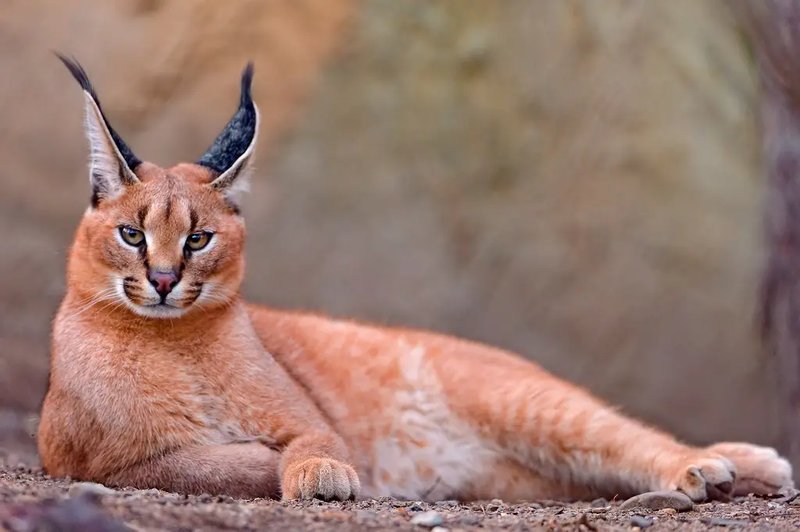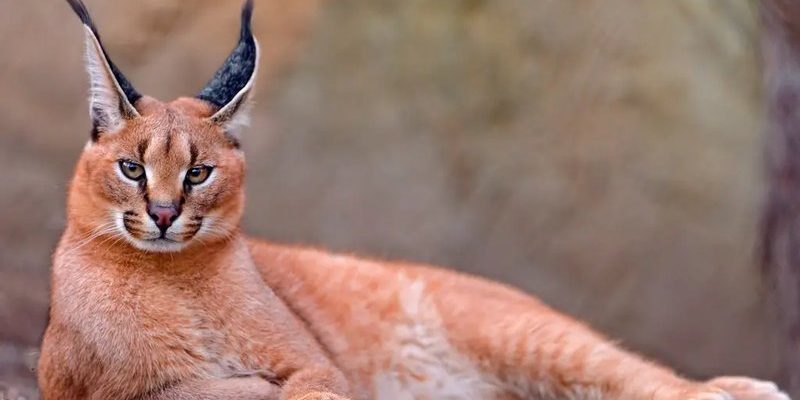
Caracal mothers face numerous challenges in the wild, where resources can be scarce and threats abound. But they tackle these hurdles with ingenuity, showing a remarkable blend of instinct and nurturing behavior. It’s like watching a seasoned chef whip up a perfect meal under pressure, combining different ingredients to ensure the best outcome. In this article, we’ll dive deep into how caracals raise their young, exploring their denning habits, feeding strategies, and the skills they teach their kittens.
Where Do Caracals Make Their Dens?
Caracals typically give birth in hidden, safe locations. Think of it as their secret hideout, where they can create a cozy environment for their kittens. Dens can be found in various places, such as rocky crevices, dense bushes, or thickets. The choice of a den is crucial, as it offers protection from predators and harsh weather.
Once caracal kittens are born, the mother remains with them in the den for the first few weeks. This secluded space keeps them safe while they are vulnerable and reliant on her for warmth and nourishment. Caracal mothers are quite picky about the location of their dens. They often choose spots that are difficult for larger predators to access, ensuring their young stay out of harm’s way.
Another key point is that caracal mothers may relocate their den occasionally. If they sense danger or if the area around the den becomes less safe, they will carefully move their kittens to a new, secure location. This adaptability is a testament to their protective nature. It’s not just about finding a good spot; it’s about being a proactive parent who keeps their young safe in every situation.
Feeding and Nutrition: A Mother’s Duty
Feeding their young is one of the most vital aspects of a caracal mother’s role. Kittens are born blind and helpless, relying completely on their mother for nourishment. In the wild, caracals primarily hunt small to medium-sized animals. Their diet often includes rabbits, birds, and rodents.
Once the kittens are old enough, usually around six weeks, the mother starts to introduce solid food. She’ll bring back freshly killed prey to the den and encourage her little ones to try it. Imagine a parent teaching a child how to eat their veggies; it’s not just about providing the food but making it appealing and accessible. The mother may begin by eating the kill herself, enticing her kittens to join in and sample their first bites.
This gradual introduction to solid food plays a key role in helping the young caracals develop their hunting skills later on. As they grow, they learn how to chew, what to eat, and how to be cautious while consuming their meals. This period is critical for laying the groundwork for their future hunting pursuits.
Teaching Survival Skills
Caracal kittens stay with their mother for up to a year, and during this time, they learn essential survival skills. Education in the wild is often hands-on! The mother teaches her kittens how to hunt and stalk prey. First, she demonstrates by bringing home smaller catches, allowing them to observe her tactics.
You might be wondering how she gets them to practice. After a while, she’ll engage in play fighting, which mimics real hunting scenarios. Think of these playful interactions as practice sessions. Kittens learn to pounce, chase, and capture their ‘prey’—often just a playful sibling—building confidence and honing their skills.
As they grow older, their mother will sometimes take them on short hunting trips. Here, they can practice stealth and agility. Watching their mother stalk an unsuspecting rabbit is like attending a masterclass in hunting. Each lesson learned prepares young caracals for a life of independence once they leave their mother’s care.
The Bond Between Mother and Kittens
The relationship between a caracal mother and her kittens is incredibly strong. Initially, the mother is their sole provider and protector. This bond is built on trust and interaction. Caracal mothers are known to be attentive, often grooming their kittens and keeping them close. Grooming helps not only in maintaining cleanliness but also strengthens their emotional connection.
As the kittens grow, they become more independent, but the bond remains. You might even see them cuddling or playing together, a testament to their loving nature. The kittens learn to communicate with their mother through vocalizations and body language, which is important for their development. This communication helps them understand when to play, when to be cautious, and when to approach their mother for guidance or comfort.
As the kittens reach the age of independence, this bond transforms. It’s like watching a mentor prepare their protégé for life on their own. The mother starts to distance herself a bit, encouraging her young ones to explore and test their newfound skills.
Challenges Faced by Caracal Mothers
Raising young is never without its challenges, especially for a caracal in the wild. The environment can be unforgiving, with food scarcity and threats from larger carnivores posing significant hurdles. Caracals must be resourceful hunters, and if their usual prey is scarce, they might struggle to provide enough food for their young.
Moreover, larger predators, like lions and hyenas, can pose a threat to caracal dens. Mothers need to stay vigilant and watch for any signs of danger. They often rely on their acute senses of hearing and sight to detect potential threats. If they sense danger, they may move their kittens or even fight back if necessary.
Unfortunately, younger caracals also face their own risks. Many won’t survive their first year due to starvation, accidents, or predation. It’s a harsh reality of life in the wild, and caracal mothers do their best to mitigate these risks, emphasizing the importance of their protective instincts.
The Importance of Independence
After about a year, it’s time for the youngsters to leave the nest. Caracal kittens reach independence when they are around 10 to 12 months old, which is a big milestone for both the mother and the kittens. As they venture out on their own, they’ll need to rely on the skills their mother taught them. Think of it like sending a kid off to college; it’s both exciting and nerve-wracking!
During this transition, the mother’s role shifts from provider to distant supporter. She may still keep an eye on her young ones, but it’s time for them to carve out their own territories. This independence is crucial for their development as it helps them establish their hunting styles and adapt to their environments.
While the caracal family may drift apart, the skills learned during this time shape each kitten’s future. Their mother’s teachings resonate with them, guiding them through the ups and downs of life in the wild.
In conclusion, caracals are fascinating creatures that show us the importance of nurturing in the animal kingdom. The way they raise their young—with care, protection, and teaching— is truly a marvel. Understanding how caracals raise their young helps us appreciate the delicate balance of life in the wild and the dedication these mothers have to ensuring the survival of their species.

